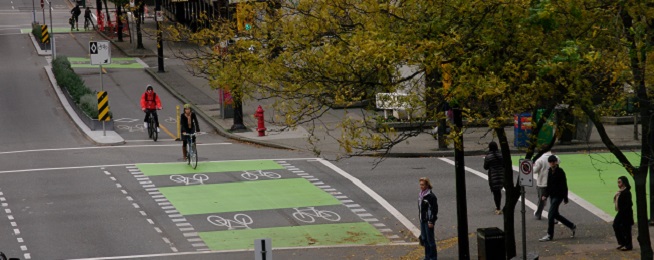THE Hobart City Deal could play an important role in changing transport choices in Hobart.
One of the goals of the deal is to invest in infrastructure to provide efficient transport that enhances accessibility and liveability.
This seems to have been interpreted as public transport in the form of ferries, light rail and efficient buses.
Hobart is in desperate need of more frequent, fast and reliable public transport but focusing only on public transport ignores the benefits an all-abilities cycling network can deliver.
Adding a safer cycleways network is relatively inexpensive, and will give Hobartians another choice for short journeys to work, school, shops and play.
All-abilities cycleway networks should be built to a standard that means you’d be happy for your eight-year-old daughter or 80-year-old father to ride on.
They must be separated or in a low-speed traffic-calmed environment, and comfortable and easy to ride.
Cycleways are an efficient use of road space for the number of people they can potentially carry, compared to a traffic lane filled with mostly single-occupant vehicles.
Riding a pushbike is cheap. The biggest cost is buying a bike; once you’ve got a bike the cost of servicing and parts is low. Electric bikes, which can flatten Hobart’s hills and take you faster and farther, are more expensive, but not if you compare them to buying and running a car or buying a Metro ticket every day.
Some people with disabilities find riding a standard or modified bicycle can be easier for them than walking. In the UK city of Cambridge, one-quarter of commutes for people with disabilities are by bicycle because the city is set up for easy riding.
Cycleways provide a healthy transport option that can incorporate exercise into daily routines and can keep older people and people with disabilities active and connected to their communities.
Cycleways contribute to cleaner air and quieter, safer roadways, which is important for liveability.
Would you want to live next to a four-lane road filled with high-speed motor vehicles or a roadway with a mix of walking, cycling, public transport and motor vehicle infrastructure?
It was encouraging to see that three of the five scenarios for Hobart’s transport future the RACT released recently included separated cycleways. The vision for Hobart of systems that move people efficiently, rather than prioritising motor vehicles, is what the City Deal should facilitate.
Most of Australia’s capital cities are investing in separated cycleways that are aimed at people who want to ride for transport.
Local governments are either funding these infrastructure projects from their own budgets or working in partnership with state governments, such as the North Brisbane Bikeway and Adelaide CBD cycleways.
Hobart’s new transport strategy details the desire for an all-abilities, safer cycling network but the plan for how this is to be achieved is still being developed. It is likely the council will not have the resources to fund an extensive network on its own.
The City Deal could provide funding help to councils from the state and federal governments to quickly roll out a core, separated cycling network across Hobart that can be built upon in years to come.
Active transport infrastructure is important for the future of all Tasmanian cities and it should receive support and funding from all levels of government to make it happen.
Alison Hetherington is public affairs adviser with Bicycle Network Tasmania.
This opinion piece was first published in The Mercury on 18 December 2018. Image: flickr.com/photos/pwkrueger/


